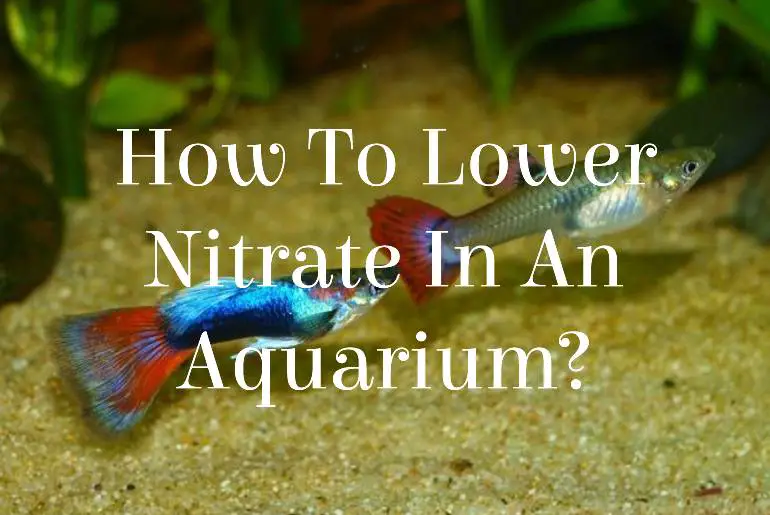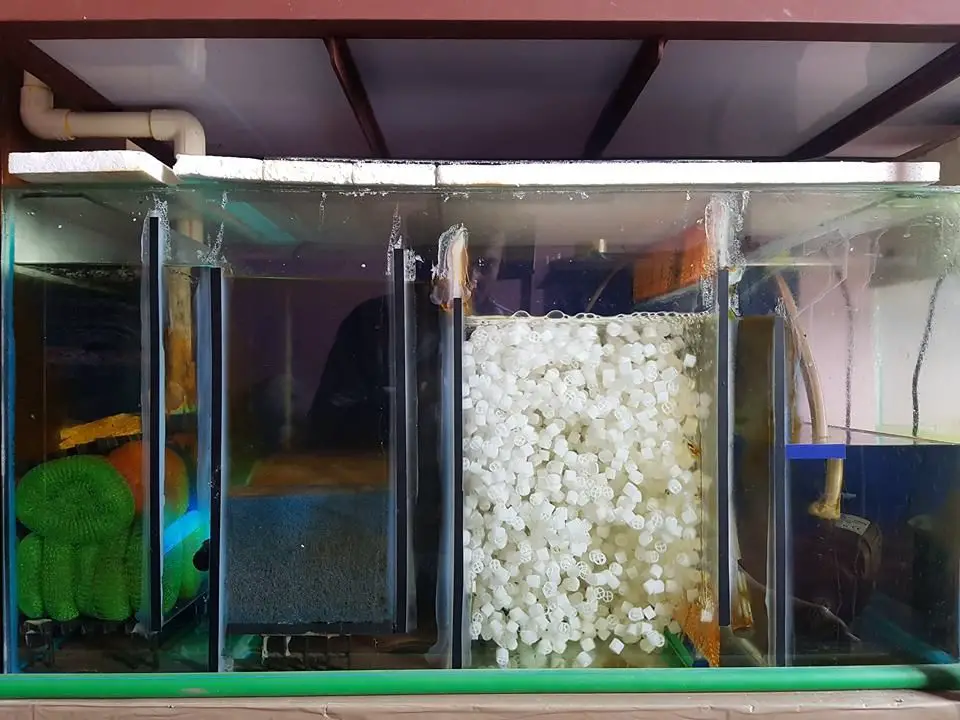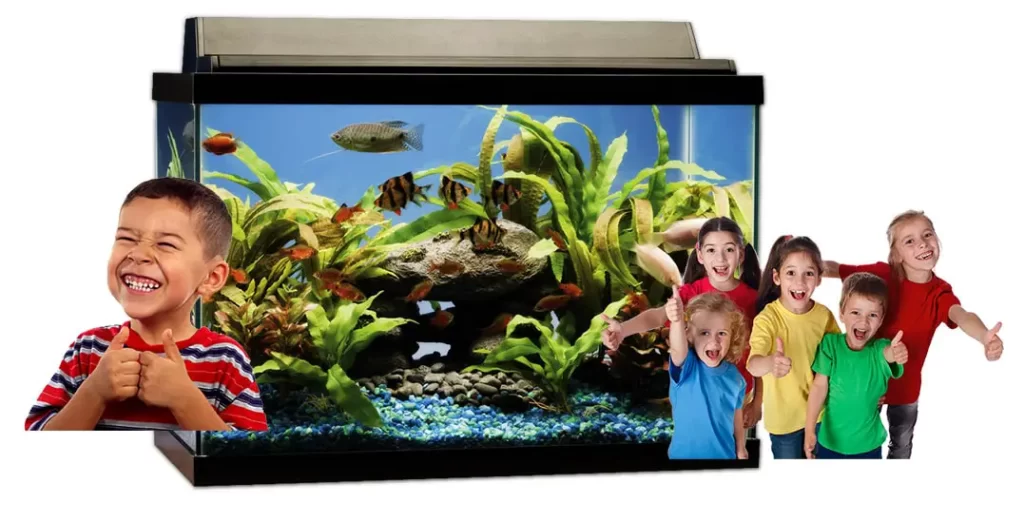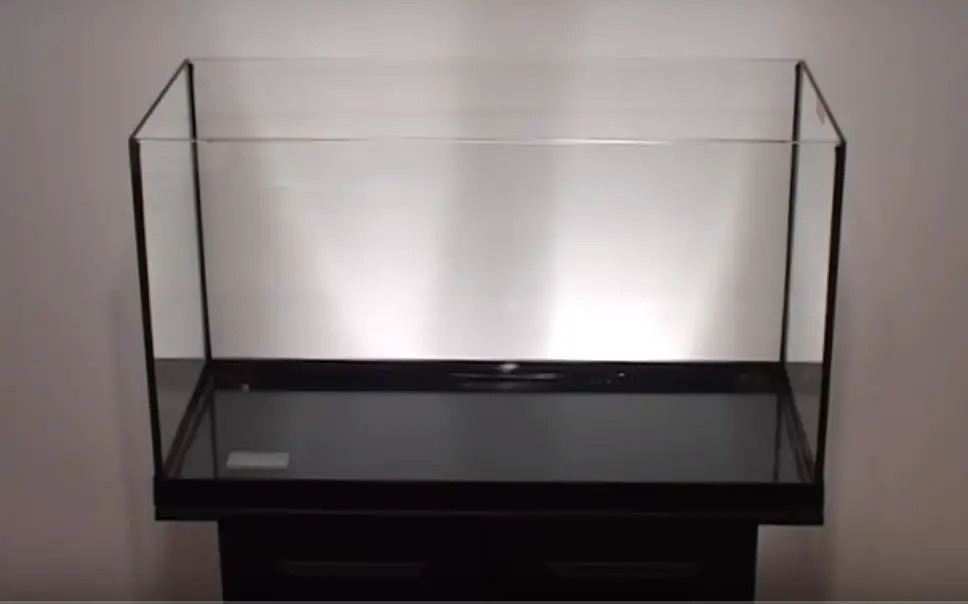I know everyone thinks nitrate in the tank is not harmful rather it is essential for plants. I agree with this statement to some extent only. A high level of nitrate is as harmful as a high level of nitrite and ammonia. So, if you see your test kit indicating a high level of nitrate in an aquarium, prepare yourself for chores. You need to lower the nitrate level in an aquarium as soon as possible. But how to lower nitrate in an aquarium?
Well, changing the water to growing plants in the aquarium is the easiest and the simplest way to lower the nitrate. Also, some chemical methods and using a cycled filter will make your work easier and faster.
A high level of nitrate is dangerous for fish and it can get fatal very soon. So, you see lowering the nitrate is not only necessary but rather very important.
I know this piece of information will do you no good unless you get details about everything I am talking about.
So, in this article, I will talk about the reason, causes, consequences of high nitrate levels in the tank. Read it thoroughly and don’t miss any part of it.
How To Lower Nitrate In An Aquarium?
Well, seeing a high level of nitrate in the aquarium water all of the sudden can bring a nervous breakdown. And I know it because I have been through it.
You can name the mistakes you can make in a tank, there is a high possibility I have done it while I was a beginner.
But once you figure out what to do and what not to do in the tank, it starts to get easier. The rise in the nitrate level might shock and stress you at first.
But once you know how to reduce the nitrate level in the tank with simple steps, you won’t be as worried as you are now.
Here is what you need to do when you see a nitrate level higher than necessary.
Water Change
You need to dilute the nitrate concentration in the aquarium and the best way to do it is by removing a little amount of present water with the same amount of new water with no chemical content.
Firstly, you have to discard 30 to 40% of aquarium water with high nitrate. And then add the same amount of clean and nitrate-free water in the tank.
You need to change the water once every week to prevent the nitrate to build up in the tank and give nitrate shock to fish.
Plant Growth
Plants love nitrate and will consume nitrate present in the tank and use it for their growth. So, if you see nitrate level rising, add a few more plants to the tank.
This will help to make the aquarium ecosystem balanced and beautiful. Even the fish will love the new hiding space but please remember not to overload or crowd the tank.
Completing Aquarium Nitrogen Cycle
The easiest way to lower nitrate from the aquarium water is to install biological filter media in the aquarium filter.
You see beneficial bacteria convert ammonia into nitrate through the aquarium nitrogen cycle. Sometimes, the high production can be the failure of filter or filter media.
So, once you correct the wrong and maintain the optimum capacity of your filter, the nitrate level goes down itself after a while.
Feeding Less To Your Fish
When the nitrate level of your tank seems higher than necessary, quit feeding your fish for a while. Food can build up and increase nitrate in the tank.
So, either feed them very little or not at all for a while till the nitrate level goes back to the ideal level.
Using Nitrate Removing Filter Media
There are certain types of filter media that are basically and specifically made to remove nitrate from the tank.
This filter media will soak up all the nitrate from the aquarium water without disturbing the water chemistry.
There are no side effects from the use of filter media and is easier to operate too. This filter media will remove the toxic nitrate when the water passes through the filter without any further setup.
API’s Nitra-Zorb will be an ideal addition for dealing with nitrate levels in the aquarium without hampering the aquarium ecosystem.
This API’s Nitra-Zorb is quite cheap, rechargeable and you can cut the bag open using the custom filter media if the bags are too large to fit in the filter.
What Happens If You Don’t Lower The Nitrate In An Aquarium?
Don’t even think about it. Lowering the nitrate level in the tank is as necessary as feeding food to your fish.
You need to lower the nitrate level to the optimum so you won’t lose your fish. The consequences high level of nitrate invites in the tank is way worse than you can imagine.
I know a certain level of nitrate is essential in the tank but it is the case only if your tank has adequate plants.
You can’t risk killing your fish over some petty beginner’s aquarium mistake, now can you?
Let me tell you all the things you will have to face and counteract when you do not lower the nitrate level in the aquarium.
Lethargy
Your fish will start acting dull leaving behind all the fun activities it used to do. They will become sluggish and less enthusiastic to perform their daily routine.
You won’t even find them swimming. All they will do is rest in the bottom of the tank or hang around the filter or powerheads.
Color Fading
Aquarium fish are attractive thanks to the beautiful color they have. But how would you feel if your fish start to lose all its color slowly?
Not a good thing to imagine I guess. Well, how horrible it may sound, your fish will lose their color when the nitrate level spikes up.
The color of the fish starts to fade as soon as the nitrate level hits the poisoning level. This will also be the sign for you to test your aquarium water immediately.
Poor Immune System
Fish present in the tank will have no or very little energy to fight against any diseases when nitrate shock intervenes.
Bacteria and parasites present in the aquarium water will get the window to infect the fish. And, the weak immune system will make it hard for fish to defend their body.
Nitrate when reaches a higher level gets very toxic for the fish and its immune system. When the poison word gets attach to anything, you can think how weak it can make anyone.
Loss Of Appetite
When the silent killer levels up in the tank, the fish present there will start to avoid food. You will find them feeding less food than they usually consume.
Loss of appetite is one of the side effects of most of the hazards that can occur in the tank. You can imagine what can happen to a starving fish with a weak immune system.
Improper Development Of Fish
Your fish will not develop properly if your tank is going through nitrate poisoning. The development stage of fish will be rendered and disturbed and hence you will end up with fish with undeveloped organs.
Algal Bloom
Now, the curse of fishkeeping. No one wants algae in the tank but it will always be there and you can do nothing about it.
Hence, the cherry on the top will be the high level of nitrate. No one loves nitrate more than algae and hence when they get an unlimited supply of it, they will bloom like the cherry blossom in the spring.
You will have a hard time getting rid of algae from the aquarium as long as the nitrate supply is constant. Soon your whole tank will full of algae
And these nightmares will cover everything making the tank look dirty and small for the fish living there.
How Much Nitrate Can Fish Tolerate In An Aquarium?
Now, it is time to talk numbers. You need to understand the level of nitrate you need to maintain in the tank.
Although the level of ammonia and nitrite in the aquarium needs to be zero, there is a slight discount for nitrate.
A little hint of nitrate in the tank is a good thing, I will not deny that. The general nature has the nitrate level very low, less than 5 ppm actually.
However, the level of nitrate in the freshwater aquarium can be less than 50 ppm but I do not recommend you to let the nitrate level reach this high. It is best to keep the nitrate level around or less than 25 ppm all the time.
Similarly, if we are talking about the breeding tank or while getting rid of algae from the tank, you need to keep nitrate nearly 10 ppm and not more.
The level of damage nitrate poisoning can do actually depends on the type of fish, its tolerance capacity, the concentration of nitrate, and the length of exposure.
When the nitrate concentration is higher than 50 ppm, the fish will die so quickly giving you no time to react.
Even 20 to 30 ppm of nitrate can become toxic if the fish is exposed to it for a long period with no breaks.
Symptoms Of Nitrate Poisoning In Fish In An Aquarium
When the nitrate poisoning takes place in the tank, your fish will signal it to you almost immediately.
Look closely at your fish when they are showing the following symptoms and take action as soon as possible.
Brown Gills
Due to the high level of ammonia, the gills of your fish will start to turn brown, and trust me it is not a good thing to look at.
Fish Gasping For Breath
When the nitrate level rises up, the level of methemoglobin in the blood of fish also increases.
This brown chemical is responsible for lowering the capacity of the blood to capture and retain oxygen.
And hence, you will see your fish gasping for breath on the surface of the water. The gasping and struggle will look like the water is low oxygen but that won’t be the case when you test the oxygen level.
Fish Laying On Its Side
Nitrate poisoning can hamper the fish’s ability to swim properly in the tank. This will force them to stay quiet with no activity whatsoever.
You will often find your fish laying on its side with no movement or very little movement. And this strange swimming will be not a pleasant thing to watch.
Hanging Near The Filter Or Powerheads
You will find them hanging around the filter intakes or the powerheads to get oxygen and flow.
If fish has reached this stage of nitrate poisoning, then sorry to say my friend, you are about to lose your fish.
Your fish will eventually die after suffocating and gasping for breath unless you take necessary actions quickly.
What Causes High Level Of Nitrate In An Aquarium?
I think you might already know the causative agents that will lead to producing the high level of the silent killer in the tank.
Nitrate, our so-called silent killer of the aquarium, is not something that will appear magically in the tank.
When the nitrifying bacteria perform the aquarium nitrogen cycle and convert the ammonia, the end product is nitrate.
Fish excretion and other pollutants in the tank produce ammonia in the first place. So, now you see all of this is connected within the cycle of events.
The reasons for the nitrate spike are similar to the reasons ammonia level increases in the tank. I know I have to give you the list here.
Overfeeding Your Fish
When you overfeed your fish, the fish excretion increases too let alone the obesity it brings. The fish excretion, as I mentioned earlier, is the main culprit for the production of ammonia in the tank.
The more ammonia, the more will be the end product nitrate in the nitrogen cycle. Hence, the nitrate level will spike up even though you have plants to consume it.
Overstocking Your Aquarium
Overstocking can be the first influencer that will lead your fish to death due to nitrate shock. The more fish in the tank means the more excretion.
And as you now l know, fish excretion leads directly to the production of nitrate in the tank. More waste means more nitrate in the tank.
Dirty Filters
If your filter is dirty then it will not clean the water properly and beneficial bacteria will not be able to subside all the nitrogen compounds.
When the mere device which is supposed to lower the nitrate to the ideal level is not functioning properly, nitrate poisoning will not be a surprise.
Dead Plants And Fish
Dead bodies produce ammonia in such a huge amount that the end product will reach a level higher than necessary.
And if you neglect it and leave the dead fish and plants to decay in the tank, then my friend, you are welcoming nitrate shock yourself.
How To Prevent High Nitrate In An Aquarium?
Preventing nitrate from reaching a higher level isn’t that hard like people think it is. Some simple changes and habit adaption will go a long way when it comes to maintaining a tank.
So, don’t overthink simple kinds of stuff and follow the direction I show you. You will be an expert helping other fish keepers in no time.
Here is what you need to keep nitrate level in check:
- Plant many aquatic plants in the tank that will consume nitrate as soon as it is produced.
- Filter the water more often. Learn more about Aquarium Filtration Methods.
- Check the filter media and clean the filter once every 2 to 3 months.
- Avoid overfeeding your fish. You might like to Read about Fish Food 101: A Beginner’s Guide On How To Feed Aquarium Fish.
- Remove dead fish and plants as soon as possible.
- Clean and maintain the tank properly. Here is an article that can help The Easiest Way to Clean and Maintain Aquarium
- Perform water change every week. Learn more about Is Too Much Water Change Harmful For Your Fish: How To Do It Safely?
- Remove the uneaten food from the tank.
- Check the nitrate level in the tank every day. Purchase a nitrate test kit. Having information regularly is better than reacting when it is too late.
- Do not overstock your tank. Know how many fish in what gallon of water.
- Add biological filter media along with aquarium beneficial bacteria in the filter to start aquarium nitrogen cycle.
Frequently Asked Questions
I know the questions will never end. So, I have made a separate section for the questions along with the answers that might be overshadowed over the main headings.
What Is The Fastest Way To Lower Nitrate In A Reef Aquarium?
Well, the process to lower the nitrate level in the reef tank is similar to lowering the nitrate level in the freshwater tank.
All you have to do is change 20 to 40% of water and vacuum the substrate with a siphon and hose. If you perform the water change once a week, you will not have to worry about ammonia, nitrite, or nitrate level in the tank, even if it is a saltwater aquarium.
Can High Nitrate Kill Fish In An Aquarium?
Nitrate is way less toxic to your fish compared to ammonia and nitrite. However, if the level reaches higher than necessary in the tank, then my friend you are in trouble.
A high level of nitrate in an aquarium can actually stress your fish, suffocate it, and kill it after a while.
Nitrate poisoning or nitrate shock is a real thing and this will affect not only fish but also plants present in the tank.
Mind you, everything is better within a limit. Do not let the nitrate cross the limit line.
Conclusion
In conclusion, nitrate might be one of the essential supplements for plants present in the tank but nothing is good when it is more. Even sugar will taste bitter if you consume more. So, please do not let the nitrate level spike up more than necessary. Nitrate poisoning is a real thing and it will kill your fish. A little amount of it will make a difference with plant growth but make sure you let the level up to plants need.
Just follow the instruction if you ever see your nitrate raising in the aquarium. Changing water and growing plants in the aquarium are actually the best thing you can do for your fish.
Be careful and don’t panic when things go sour. It is fishkeeping and if it were easy, everyone would be doing it. Some common beginner’s aquarium mistakes cannot define your ability to keep a fish in an aquarium.
Stay calm and hope for the best. And if something comes up, hit me up in the comment section. I will answer you as soon as I can.
Good luck!!
Happy Fishkeeping!!!






